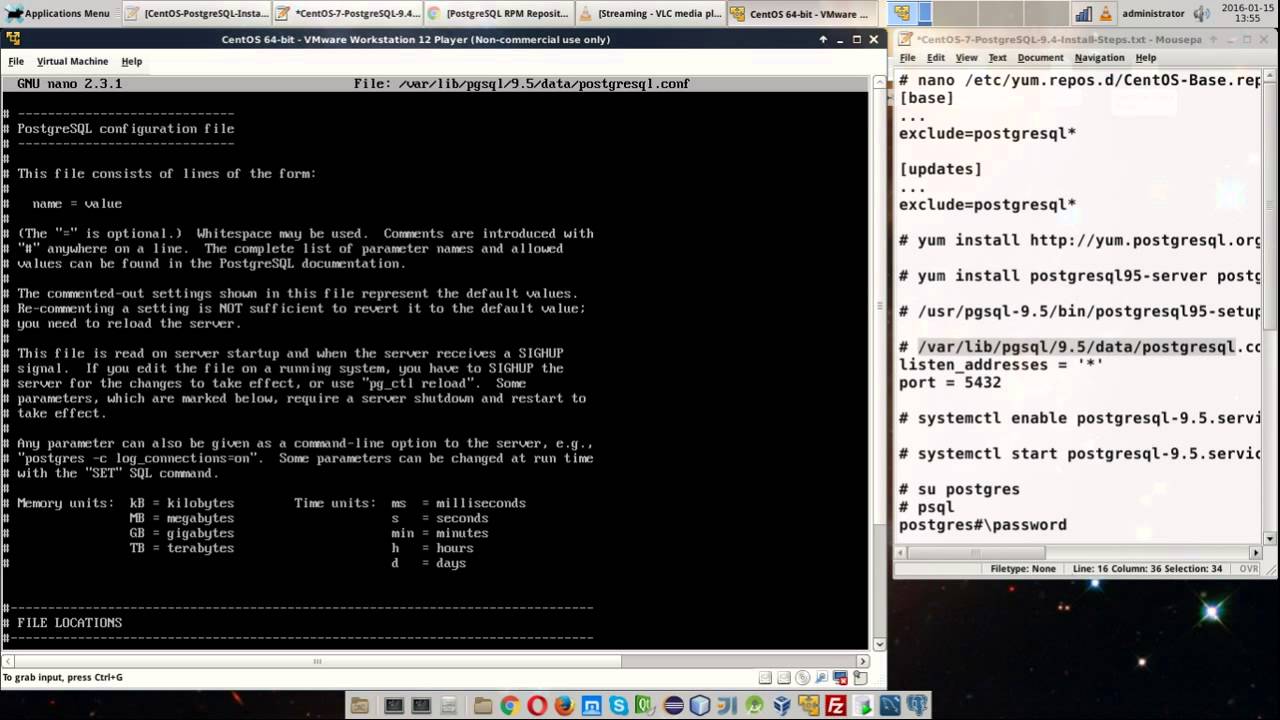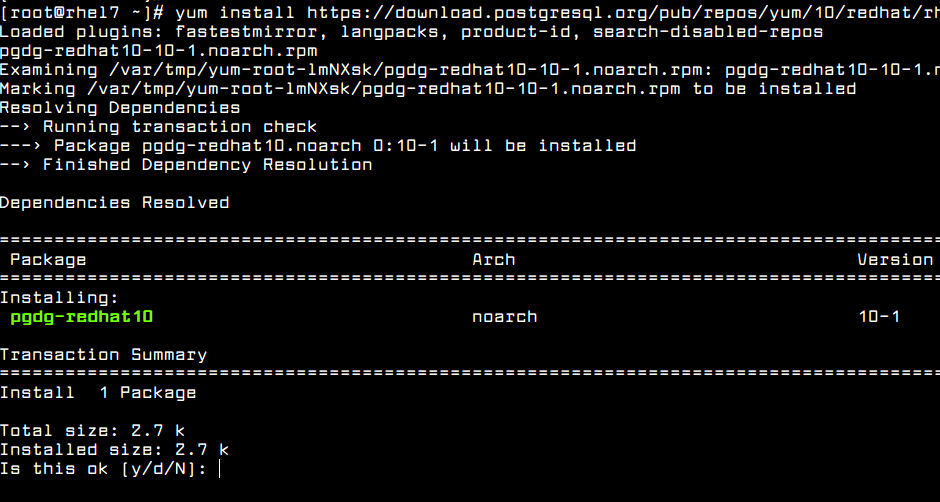

Open the repository configuration file using your preferred text editor. Otherwise, dependencies might resolve to the postgresql supplied by the base repository. Therefore, this tutorial will use the official Postgres repository.īefore you move on to setting up a new repository, exclude the search for postgresql packages from the CentOS-Base repository. But as of the writing of this tutorial, the version that is available in the CentOS 7 Base repository is obsolete. Postgres can be installed using default CentOS repositories. To prevent some inconsistent behavior that can arise from out-of-sync clocks, make sure to set up Network Time Protocol (NTP) synchronization by following the Configure Timezones and Network Time Protocol Synchronization section of the Additional Recommended Steps for New CentOS 7 Servers tutorial.
Databases can be particularly vulnerable to system time changes if they are very active and have timestamps on internal records. To set up firewalld, follow the Configuring a Basic Firewall section of the Additional Recommended Steps for New CentOS 7 Servers tutorial. A CentOS 7 server that has been configured by following our Initial Server Setup with CentOS 7 guide and our Additional Recommended Steps for New CentOS 7 Servers tutorial, including a non-root user with sudo privileges and a firewall set up with firewalld. To follow along with this tutorial, you will need: In this guide, you will install Postgres on a CentOS 7 server and go over some basic ways to use it. It is a popular choice for many small and large projects and has the advantage of being standards-compliant and having many advanced features like reliable transactions and concurrency without read locks. PostgreSQL, or Postgres, is a relational database management system that provides an implementation of the SQL querying language. They provide a structured way to store, organize, and access information. 
Relational database management systems are a key component of many web sites and applications.






 0 kommentar(er)
0 kommentar(er)
